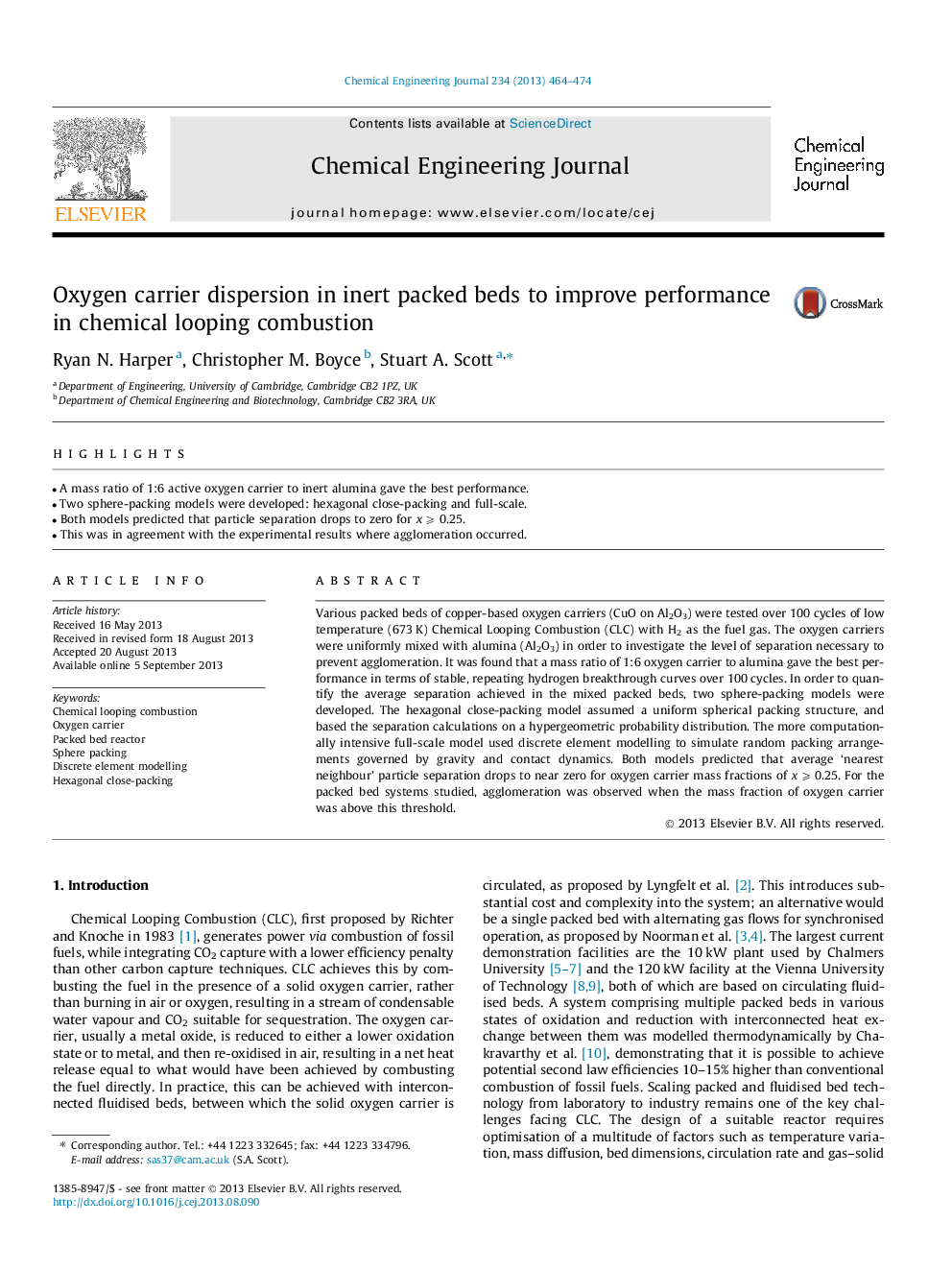| Article ID | Journal | Published Year | Pages | File Type |
|---|---|---|---|---|
| 148112 | Chemical Engineering Journal | 2013 | 11 Pages |
•A mass ratio of 1:6 active oxygen carrier to inert alumina gave the best performance.•Two sphere-packing models were developed: hexagonal close-packing and full-scale.•Both models predicted that particle separation drops to zero for x ⩾ 0.25.•This was in agreement with the experimental results where agglomeration occurred.
Various packed beds of copper-based oxygen carriers (CuO on Al2O3) were tested over 100 cycles of low temperature (673 K) Chemical Looping Combustion (CLC) with H2 as the fuel gas. The oxygen carriers were uniformly mixed with alumina (Al2O3) in order to investigate the level of separation necessary to prevent agglomeration. It was found that a mass ratio of 1:6 oxygen carrier to alumina gave the best performance in terms of stable, repeating hydrogen breakthrough curves over 100 cycles. In order to quantify the average separation achieved in the mixed packed beds, two sphere-packing models were developed. The hexagonal close-packing model assumed a uniform spherical packing structure, and based the separation calculations on a hypergeometric probability distribution. The more computationally intensive full-scale model used discrete element modelling to simulate random packing arrangements governed by gravity and contact dynamics. Both models predicted that average ‘nearest neighbour’ particle separation drops to near zero for oxygen carrier mass fractions of x ⩾ 0.25. For the packed bed systems studied, agglomeration was observed when the mass fraction of oxygen carrier was above this threshold.
